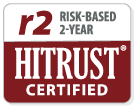Summer is the Time for a Focused Sprint to Close Remaining Gaps
Strong value-based care performance requires giving each part of the year its correct strategic focus, matching provider and staff capacity to the critical opportunity windows that open and close across the risk year. For the months of July to September there are two essential items to focus on:
- Closing gaps with urgency (What is the delta between where we are vs. where we should be? How can we close that gap?)
- Developing the larger organizational transformation priorities (training, staffing, new IT tools) that will be rolled out in Q4.

Download our season-by-season tip sheet for a quick refresher on how to optimize your risk adjustment program year round.
DOWNLOAD PDFLast-Chance Clinical Sprint Before Q4 Analysis, Planning, and Training Tasks Monopolize Staff time
In the third quarter, most organizations still have work to do before hitting the end-of-year risk recapture rate of 85-95%. Closing that gap will require the kind of dedicated focus and energy that simply cannot be pushed to Q4–the clock will have run too far down by that point. Also, considerable leader and staff bandwidth will be needed in Q4 for the analysis, planning, and training tasks required to set the stage for a strong Q1.
Therefore, despite the pull of summer vacations, Q3 is crunch time for VBC clinical operations. July-September are the final months of the year that will be available to put dedicated focus on identifying and closing patient care and documentation gaps.
Key Third Quarter Priorities for Administrators:
Compare Risk Pacing to Quarterly Benchmarks; Identify Biggest Factors Driving gaps
Assessing risk performance relative to quarter-by-quarter benchmarks is a must-do across the entirety of the year. Take a look at any delta between where the organization is now versus where it would be expected to be, and then seek information about the most productive ways to close gaps, if necessary.
To find improvement opportunities, it is always beneficial to look at performance variability across sites, individual providers, and patient types. But in Q3, the running room is often concentrated among certain patient types (or even individual outstanding patients).
Revisit the Patient Prioritization List
The most common Q3 challenge/opportunity is concentrated among difficult-to-schedule patients–the patients who were relatively easy to see have already been seen. Curation Health partners typically achieve 80-85% of their capture by the end of August. To help our client partners reach that number, we provide them with an Outreach Prioritization List which rank-orders patients by potential complexity and risk.
Identify Best Practices for Difficult-to-Schedule Patients
Having identified the missing patients, now is the time to ask for, or seek internally within your organization, best practices for bringing those patients in the door.
- Which outreach teams are finding the most success in bringing patients through the door? What are the replicable tactics they are using that other providers and sites at your organization could put to work?
- Do you have an opportunity to ramp up in-home risk assessments for patients who are not likely to be able to come to the office in person?
Check to See If Some Missing Patients are Seeing Specialists in Your Network– And Enlist Help There
Some complex patients may not be showing up in primary care settings because they are under the care of specialists in your network. If you’re able to identify those patients in your organization, coordinate with specialists and their care teams to identify opportunities to identify and close any care gaps that have not yet been addressed.
Look Beyond Recapture Rate to Identify As-Yet Undocumented Conditions
Even if your recapture rate is pacing as it should (and especially if your recapture rate is pacing as it should!), check to see if there are patients with clinical indicators of other chronic conditions that have yet to be captured.
Finally, Carve Out Some Time for Q4 Thinking and Planning
Once the dust has settled from Q3, it will be time to take up some very different-in-kind tasks in Q4. The Q4 focus should be bigger-picture analysis, planning, and a big push around training staff so that everyone is ready for a strong 2024. Although the time to fully take up that work is not in Q3, devoting a little time toward the end of the summer months to strategic thinking and planning will set you up for a more effective and manageable Q4.
Make time for conversations about what the big priorities should be. Ask yourself, and discuss with colleagues: what kinds of analyses, plans, and training sessions are likely most needed? With those questions answered, Q3 is a good time to begin reserving time in the calendar and sending out save-the-dates, so that those essential activities can unfold smoothly during Q4.

